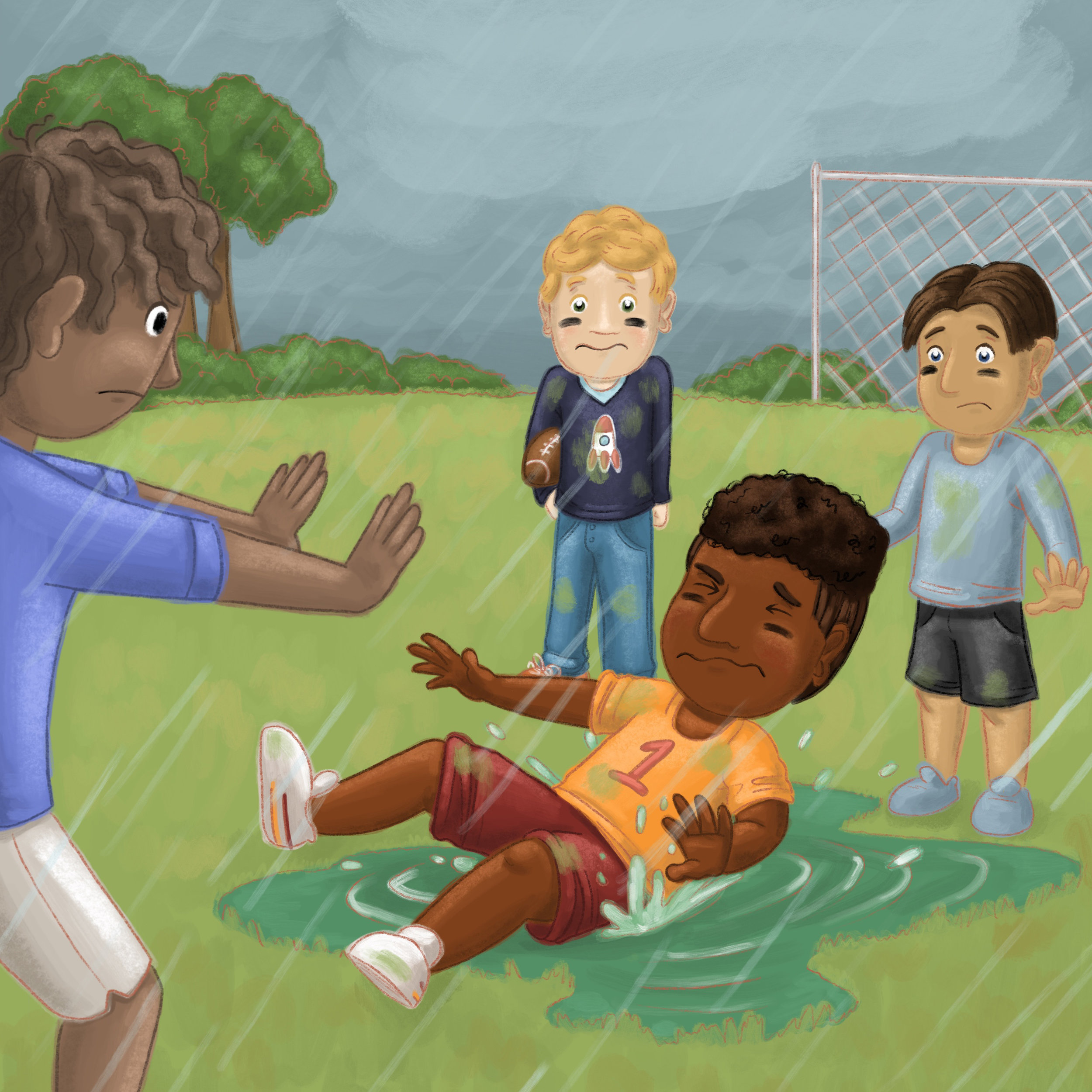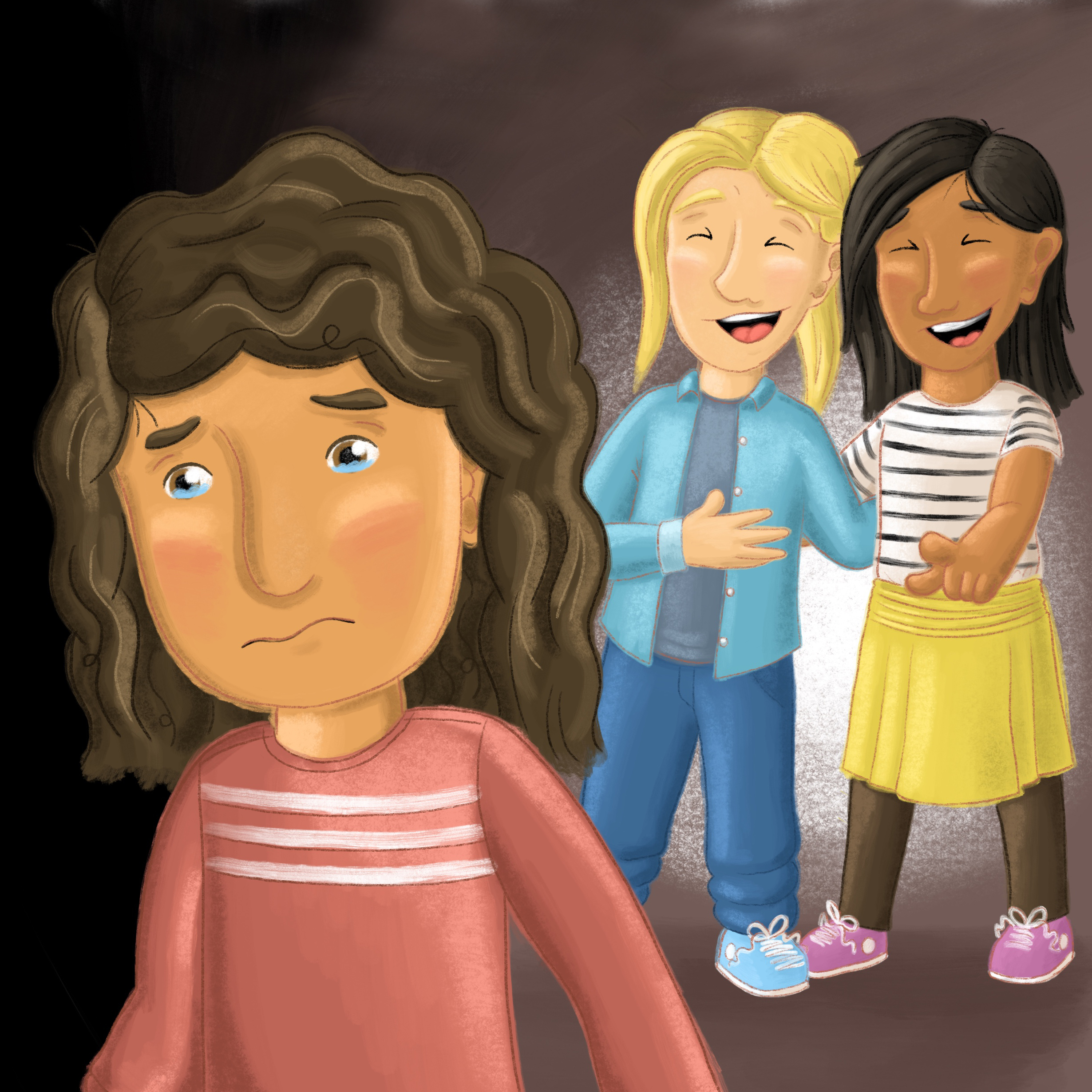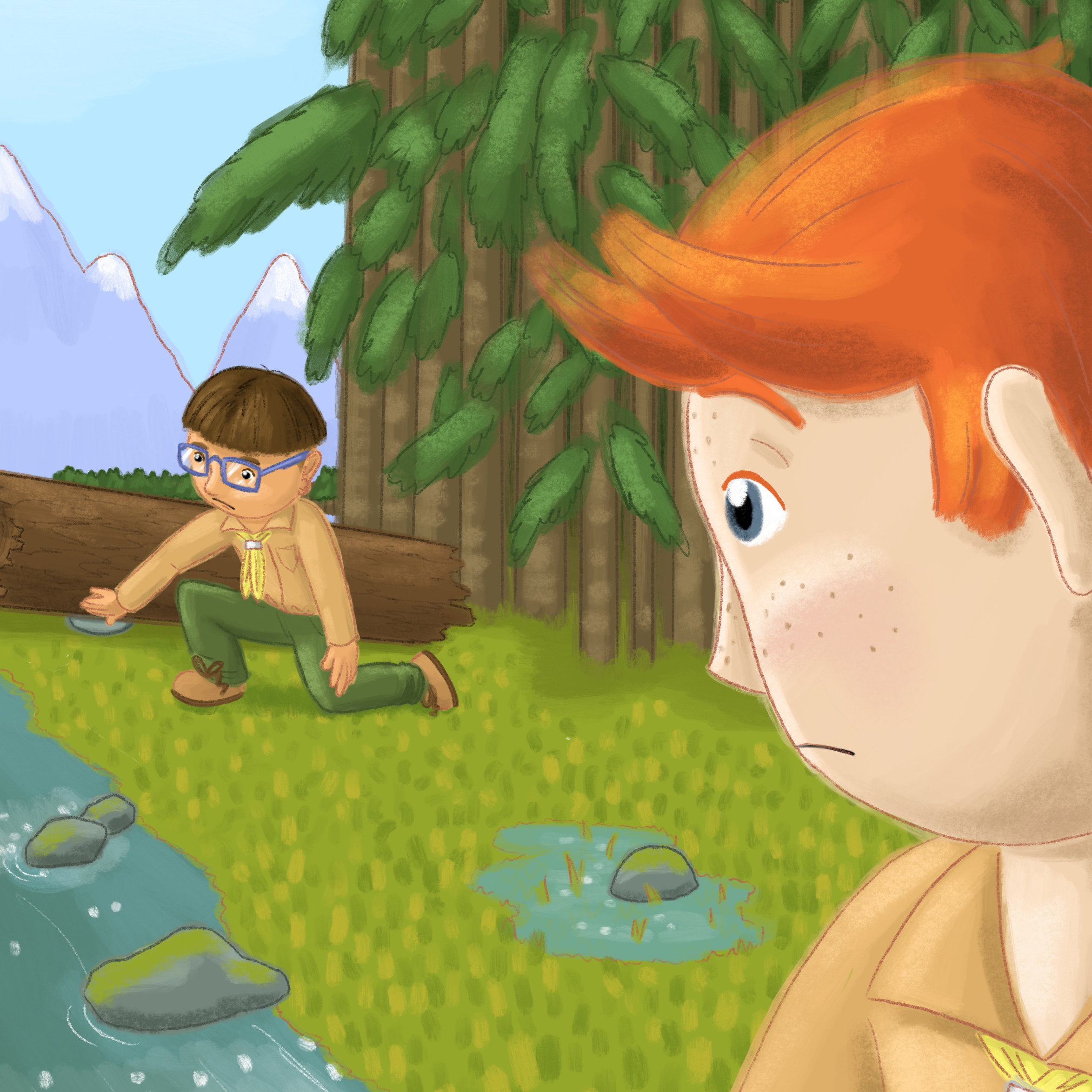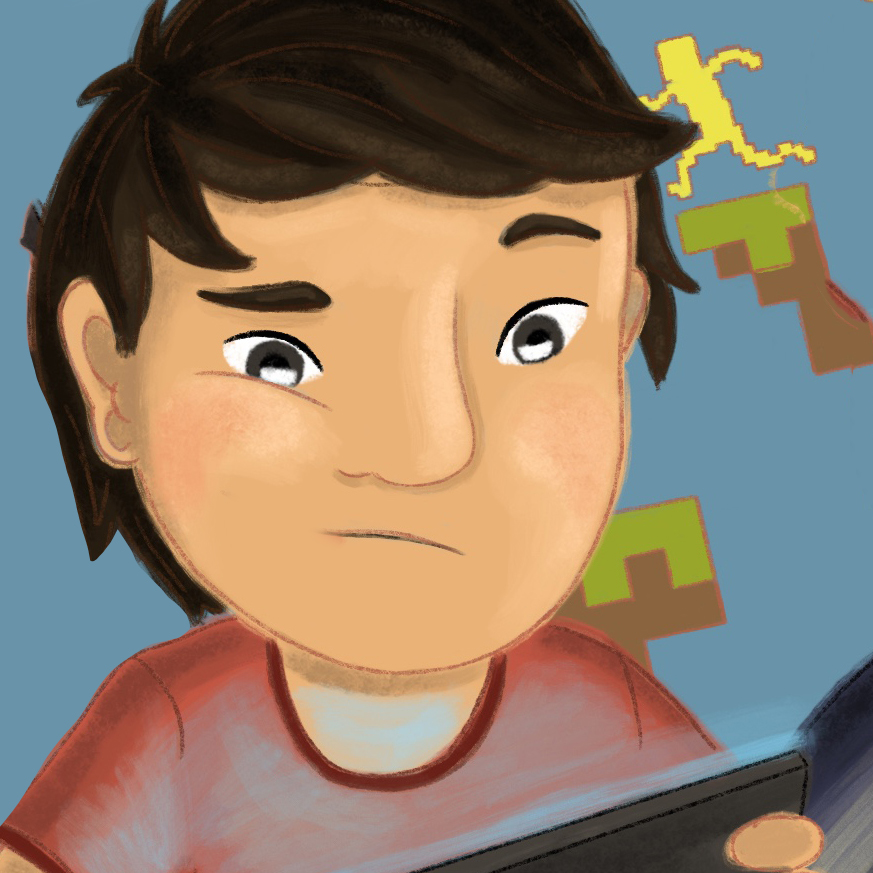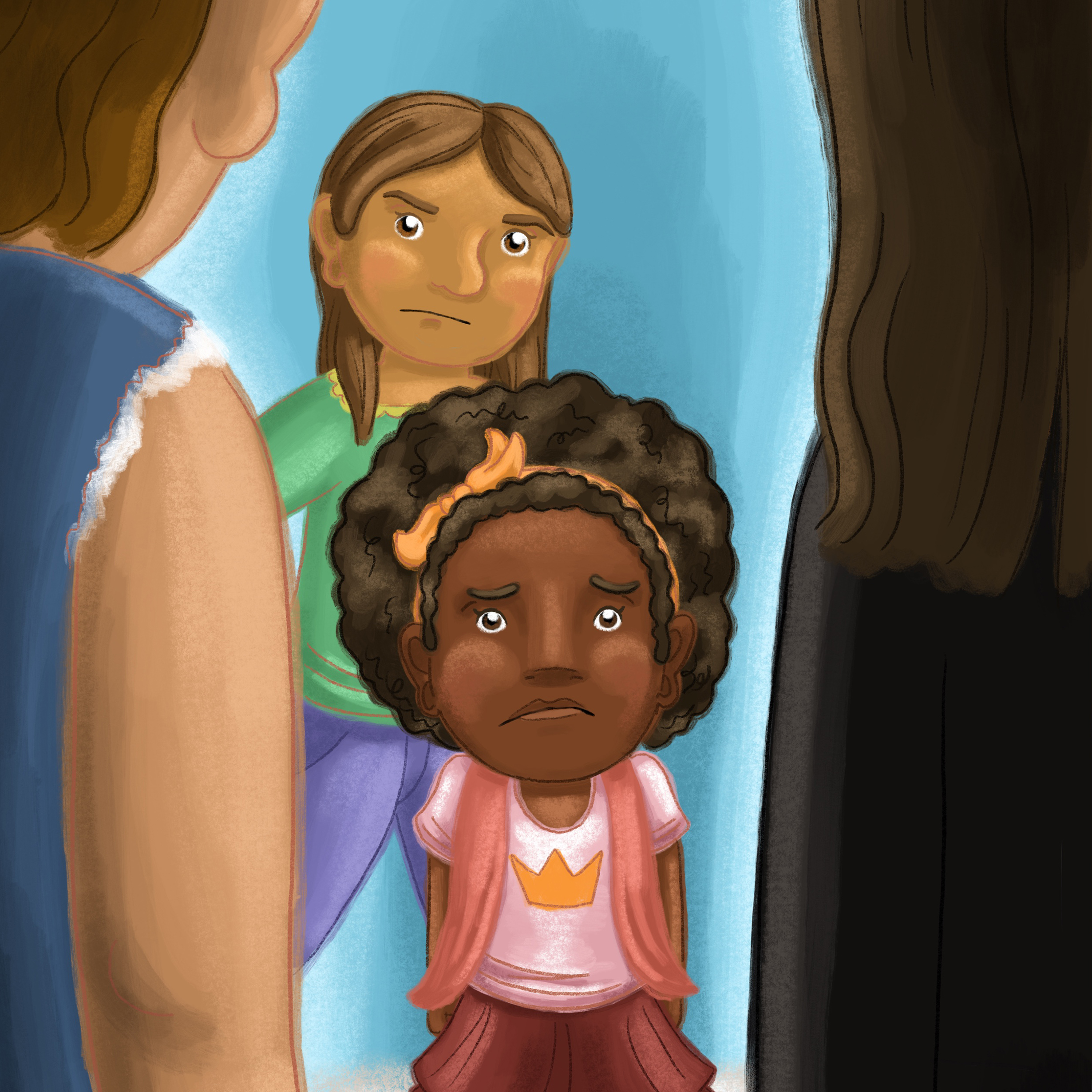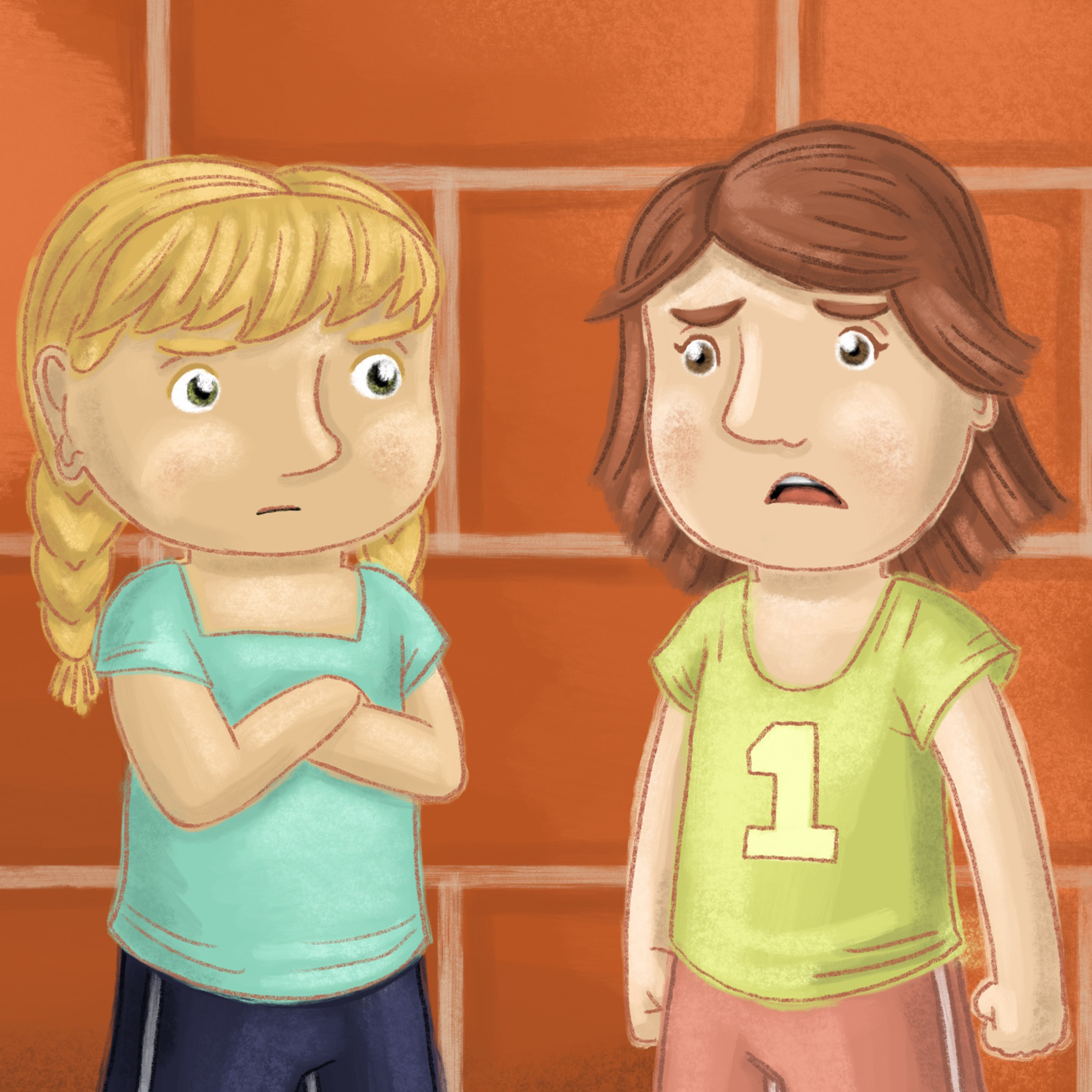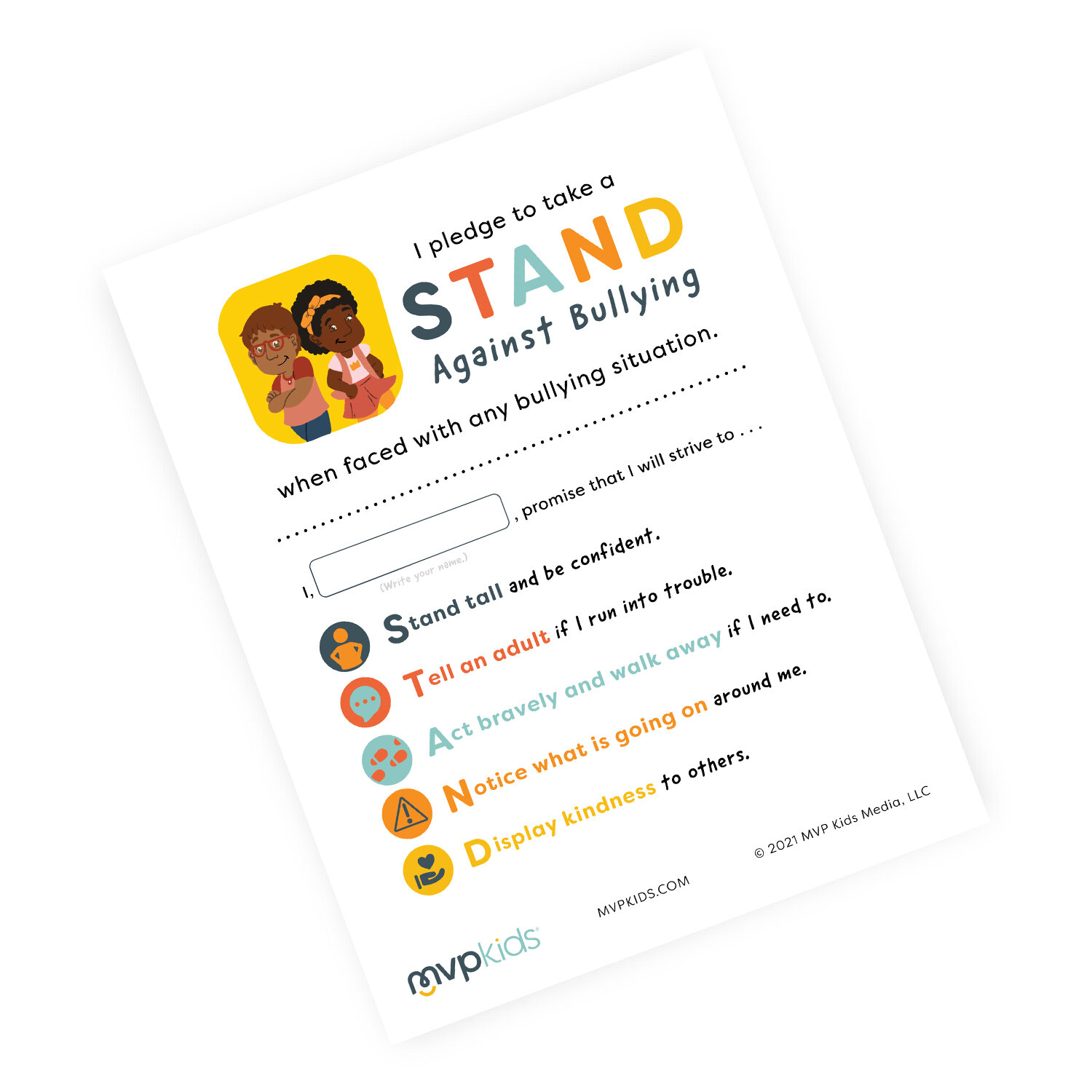MVP Kids® S.T.A.N.D. Against Bullying
In a study conducted by StopBullying.gov, “about 49% of children in grades 4–12 reported being bullied by other students at school at least once during the past month, whereas 30.8% reported bullying others during that time.”* From a very young age, we need to help our children understand and STAND against bullying.
Bullying is defined by StopBullying.gov as an “unwanted, aggressive behavior among school aged children that involves a real or perceived power imbalance. The behavior is repeated, or has the potential to be repeated, over time.” Bullying is not limited to a specific age group. MVP Kids is dedicated to equipping children and parents with ways to handle all kind of bullying situations from the bullied to the bully.
* “Facts About Bullying.” StopBullying.gov, www.stopbullying.gov/media/facts/index.html.
Recognizing Bullying
Four Different Types of Bullying
Physical bullying
When someone’s body or belongings are hurt. This can happen through pushing, shoving, hitting, spitting, stealing, breaking belongings, etc.
Verbal bullying
When words are used to cause mental harm to someone. This includes name-calling, teasing, threats, etc.
Social bullying
When behaviors affect someone’s relationships to others. This includes spreading rumors, intentional exclusions, public embarrassment, etc.
Cyber bullying
When any form of technology is used to cause mental or social harm to someone. This includes messaging, posting pictures, etc.
Children Involved in BullyinG
Three Perspectives of Bullying
Bullying situations often involve three sides: the child who is bullied, the child doing the bullying, and the child who witnesses the bullying. At different times a child could be involved in multiple different ways. For example, a child could witness bullying one day. Later that child could be the victim of bullying behavior and then retaliate by bullying someone else another day. It is important not use labels, such as “bully”, but rather a child who bullies because there is always room to change and learn appropriate behaviors.
Children who are bullied
Be aware of the children who are at risk for being bullied:
-Shy or quiet
-Autism Spectrum Disorder, ADHD, mental disabilities
-Over/underweight
-Sexual orientation
-Speak a different language at home
Signs your child is being bullied
-Depression
-Anxiety
-Decreased Appetite
-Unexplained bruises or cuts
-Mood Swings
-Nightmares
-Not wanting to go to school, park, or place where the bullying is happening
-Exhibiting aggressive behaviors toward others
What parents can do:
-Take what they say seriously, but don’t overreact
-Help them understand that it is not their fault they are being bullied and they don’t deserve to be treated disrespectfully
-Try to come up with peaceful ways to resolve the bullying
-If the bullying is occurring at school, contact school authorities to help handle the bullying problem
For more resources on how to rebuild your child’s self-esteem after bullying, ways to empower kids against bullying, and creating a bully-free environment at home, click here:
Children who bully others
Be aware of the children who are at risk for bullying others. They may:
-Lack empathy or compassion
-Have conflict at home
-View media filled with violence and aggressive behavior
-Lack problem-solving skills
Signs your child is bullying others:
-Trouble sleeping
-Doesn’t understand other’s emotions
-Display frustration, anxiety, or depression
-Behavior problems at school
-Only focused on being in control or being popular
What parents can do:
-Acknowledge your child’s behavior
-Don’t overreact, but take it seriously
-Try to find the underlying emotional issues
-Take it one step at a time
-Involve teachers and other school authorities
For more resources on sibling bullying, conflict resolution skills, and helping the child who bullies, click here:
Children who witness bullying
Effects of witnessing bullying:
According to recent studies, children who witness bullying can suffer just as much mental harm as children who are bullied. This is due to the fear, anxiety, and guilt that is experienced from witnessing someone harm another person.
Signs your child has witnessed bullying:
-Depression
-Anxiety
-Decreased Appetite
-Nightmares
-Trouble sleeping
What parents can do:
Talk with your child about what they should do if they see someone bullying another person. This should involve telling an adult and speaking up if the situation is safe.
For more resources on the effects of witnessing bullying, empathy exercises, and extracurricular activities to encourage self-confidence and standing against bullying, click here:
S.T.A.N.D. Pledge
Encourage Your Child to STAND Against Bullying
Stand tall and be confident.
Tell an adult if you run into trouble.
Act bravely and walk away.
Notice what’s going on around you.
Display kindness to others.
Download a copy of our STAND Pledge for your child to make the choice to put an end to bullying by taking a STAND.
Encourage your child to say the pledge aloud and then share with someone how your child has decided to STAND against bullying.







